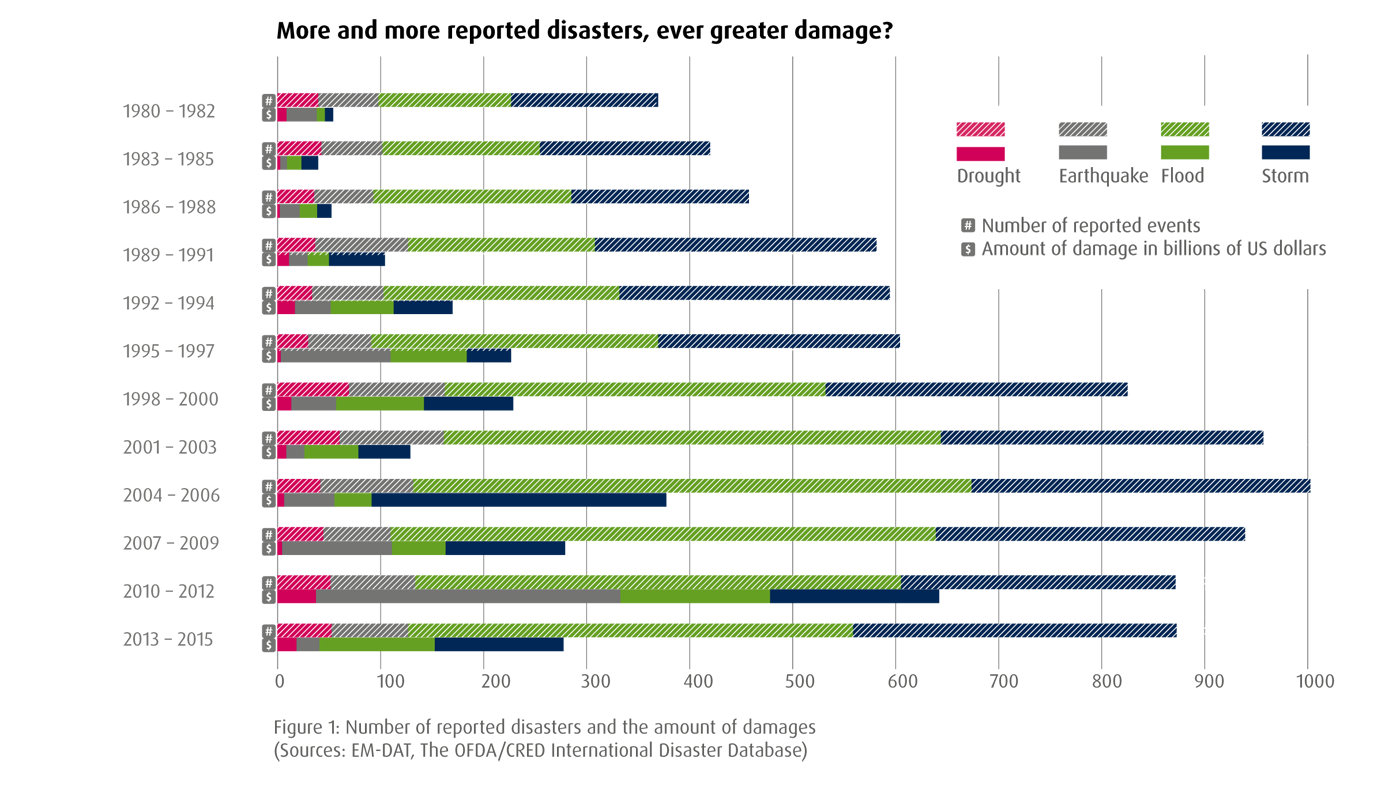
Scroll down to continue
A disaster occurs when extreme natural events hit a vulnerable population. A country may be highly exposed to natural hazards, but that doesn't necessarily make it highly vulnerable to humanitarian disasters. The below interactive map shows how countries perform when they are judged on five parameters: Exposure, Vulnerability, Susceptibility, Lack of coping capacities and Lack of adapting capacities.
How to use map: Select a parameter and move mouse over particular country to know more
Data Source: World Risk Report 2016 published by the United Nations University (UNU) Institute for Environment and Human Security
(UNU-EHS) and Bundnis Entwicklung Hilft
Floods dominating cases of natural disasters since 1980
More than 480 people in India have died in flood-related incidents since the beginning of monsoon in June. Of the top 15 countries that are most at risk worldwide, eight are island nations. Their high disaster risk is due to their exposure to flooding, cyclones and sea level rise. Apart from lack of technologies for prognosis on tsunamis and floods, the living conditions of the people in the affected regions and options available to respond quickly are equally significant for survival in extreme natural events.
 Correlation between Exposure, Vulnerability and Lack of coping capacities
Correlation between Exposure, Vulnerability and Lack of coping capacities
The severity of natural disasters is not the only factor that decides vulnerability of a country, but the level of development is also important. A risk analysis of 171 countries around the world based on their vulnerabilities and coping capabilities reveals global hotspots for a high disaster risk and also the countries that have robust capabilities for both material flow and information exchange, ensuring last-mile access to people in need.
Mouse move over bubble to explore more
Data Source: World Risk Report 2016 published by the United Nations University (UNU) Institute for Environment and Human Security
(UNU-EHS) and Bundnis Entwicklung Hilft
Japan is the only developed country with a disaster risk of more than 10 per cent, due to its extreme exposure to natural disasters, which is the fourth highest in the world. Japan's high level of development and recent investments in risk reduction reduce its likelihood of being badly affected by its frequent disasters, moving its overall risk down to 17th in the world.
If you want to be safe from natural disasters, move to Qatar
Countries from Middle East and northern Europe dominate the list
Qatar has the lowest disaster risk of any country with no reported disasters since 1900. It enjoys this status owing to its location away from the disaster hotspots in Oceania, south-east Asia and Central America. Qatar is joined by highly developed countries that also have a low level of exposure. Apart from three countries in the Middle East like Saudi Arabia, UAE and Bahrain, the list of the ten safest countries includes three north European nations: Norway, Sweden and Iceland.
Data Source: World Risk Report 2016 published by the United Nations University (UNU) Institute for Environment and Human Security
(UNU-EHS) and Bundnis Entwicklung Hilft
Africa is most vulnerable, especially to droughts
Parts of eastern and southern Africa are gripped by one of the strongest El Niño events ever recorded, causing widespread drought and food shortages that have left more than 36 million people facing hunger.
Data Source: World Risk Report 2016 published by the United Nations University (UNU) Institute for Environment and Human Security
(UNU-EHS) and Bundnis Entwicklung Hilft
Questions that need to be answered
The risk of disasters remains high and the Nepal earthquake of 2015 or the floods in South Asia are a stark reminder of what can happen to a country that hasn't built enough capacity to tackle extreme weather events. It is time the countries asked these questions as a first step to preparedness: How vulnerable are they to natural hazards? To what extent can they cope with acute disasters?
¤ Data Courtesy: World Risk Report 2016 published by the United Nations University (UNU) Institute for Environment and Human
Security
(UNU-EHS) and Bundnis Entwicklung Hilft
¤ Text and Analysis: Lalit Maurya and Subhojit Goswami
BACK TO TOP